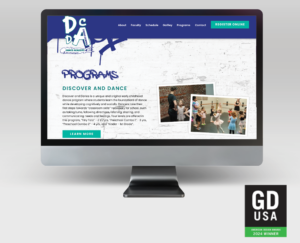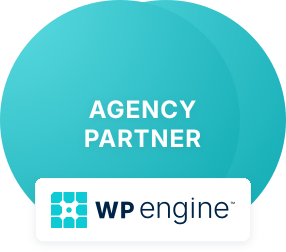The internet is huge and always changing. The old rules of ranking near the top of search results are out the window in favor of new, more dynamic guidelines and recommendations. (Goodbye, metatags and hello, social media!) But fear not, whether you have an existing website or are just starting to design yours, you can optimize your website so your customers can find you.
Below are our top five SEO fixes that’ll have you popping up in search engine results in no time.
 Prioritize an intuitive website. It sounds obvious, and perhaps a bit too general, but there is no other way to say it: your website needs to work for you. As your business’s virtual storefront, your website should clearly and efficiently present everything your lead needs to convert to a customer.
Make it easy for people to find what they’re looking for once they land on your site. Feature pricing, contact information, or availability prominently if that’s what’s important to your business. Drive your customers to the most important thing with multiple links to the same content.
Prioritize an intuitive website. It sounds obvious, and perhaps a bit too general, but there is no other way to say it: your website needs to work for you. As your business’s virtual storefront, your website should clearly and efficiently present everything your lead needs to convert to a customer.
Make it easy for people to find what they’re looking for once they land on your site. Feature pricing, contact information, or availability prominently if that’s what’s important to your business. Drive your customers to the most important thing with multiple links to the same content.
Your navigation should be clean, simple, and intuitive so important information is just a click away from a customer. There’s no need to come up with an unnecessary synonym for “About,” when users are trained to look for just that.
There’s nothing more frustrating than a website that moves around its most important content each week, so keep the core of your site the same but update the content, photos, or offerings to keep things interesting and optimized for SEO. An occasional full refresh is always welcome but do it at the right time–a product launch, a new season, new services–for your business.Remember, every one of your pages should have a reason for existing. If it doesn’t help you tell your story or sell your business, you likely don’t need it. Examine your analytics (see below) to determine what’s really necessary.
 Dive deep into your analytics and adjust accordingly. There’s no question about it: we love analytics. There is no better way to determine what’s driving traffic to your site, and what’s not, than by taking a good, honest look at your analytics. Analytics will tell you what keywords people are using when they ultimately land on your site, where inbound traffic originates (i.e. are people finding you through search engines or social media? Through a link back from someone else’s site), and even the time of day and day of the week when people seek and find you most.
Armed with your analytics knowledge, you’ll have the power to increase traffic to your site by making small but important changes to get more in line with your audience. For example, if 70% of your audience is heading to your website from Instagram, you may want to spend more time (and money) on that platform vs others. If new customers are finding you with some very specific keywords, use more of them. Speaking of…
Dive deep into your analytics and adjust accordingly. There’s no question about it: we love analytics. There is no better way to determine what’s driving traffic to your site, and what’s not, than by taking a good, honest look at your analytics. Analytics will tell you what keywords people are using when they ultimately land on your site, where inbound traffic originates (i.e. are people finding you through search engines or social media? Through a link back from someone else’s site), and even the time of day and day of the week when people seek and find you most.
Armed with your analytics knowledge, you’ll have the power to increase traffic to your site by making small but important changes to get more in line with your audience. For example, if 70% of your audience is heading to your website from Instagram, you may want to spend more time (and money) on that platform vs others. If new customers are finding you with some very specific keywords, use more of them. Speaking of… Keywords, keywords, keywords. There’s no substitute for having the right kind of content your audience needs. By homing in on specific topics and keywords that people search for when looking for a business such as yours, you’ll grab a search engine’s–and a potential customer’s–attention. Put yourself in your customers’ shoes. What are they most likely searching for when you want them to find you?
For example, do you have a dog grooming business that specializes in long-haired, high-anxiety pups? Your website should say more than “dog grooming services available,” and include words that your target pet parents will be searching for.
Keywords, keywords, keywords. There’s no substitute for having the right kind of content your audience needs. By homing in on specific topics and keywords that people search for when looking for a business such as yours, you’ll grab a search engine’s–and a potential customer’s–attention. Put yourself in your customers’ shoes. What are they most likely searching for when you want them to find you?
For example, do you have a dog grooming business that specializes in long-haired, high-anxiety pups? Your website should say more than “dog grooming services available,” and include words that your target pet parents will be searching for.
Your pictures, graphs, and charts should also be tied to keywords. People love looking at compelling images, but search engines and their ranking systems need alt tags, captions, and photo descriptions to make them useful for SEO.
On the flipside, don’t shoehorn keywords where they don’t belong, and steer clear of copy too full of jargon. Remember, above all else, your site should be readable, relatable, and understandable. (Helpful for both humans and search engines.)
 In-bound links are links from other sites to yours and can establish your site as reputable in the eyes of a search engine. Often, these links can come from earned media (that is, a news site or established website writing about your business and linking back to you) but increasingly, social media mentions and links are driving traffic.
When it comes to earned media, reach out to related businesses and respected bloggers to partner for links back to each other’s websites. Better yet, when you have a good story to share, reach out to local news sites to try to get a little media coverage.
In-bound links are links from other sites to yours and can establish your site as reputable in the eyes of a search engine. Often, these links can come from earned media (that is, a news site or established website writing about your business and linking back to you) but increasingly, social media mentions and links are driving traffic.
When it comes to earned media, reach out to related businesses and respected bloggers to partner for links back to each other’s websites. Better yet, when you have a good story to share, reach out to local news sites to try to get a little media coverage.
Establish your business’s social media persona and update it frequently. Use social media as teaser content if you’re trying to drive traffic back to your site for lead capture or purchase (things like “Learn more” or “Buy now” are helpful here). And make sure that the social media platform you’ve chosen is right for your business and for your audience. If you’re targeting Gen Z, Tik Tok may be a better place for you than Facebook.
-
 Be mobile-friendly. This is non-negotiable because It is very, very likely that customers will first encounter your website on their smartphones or tablets, and a site’s search engine ranking (where you show up in search results) is penalized if your site is not mobile-friendly.
Speak with your designer prior to kicking off the website design process and always make sure that your site is optimized for mobile before going live.
Be mobile-friendly. This is non-negotiable because It is very, very likely that customers will first encounter your website on their smartphones or tablets, and a site’s search engine ranking (where you show up in search results) is penalized if your site is not mobile-friendly.
Speak with your designer prior to kicking off the website design process and always make sure that your site is optimized for mobile before going live.
Our top five SEO fixes will do wonders for your rankings and help move you toward a more user-friendly website.
Have questions, comments, or want to get started? Reach out!









